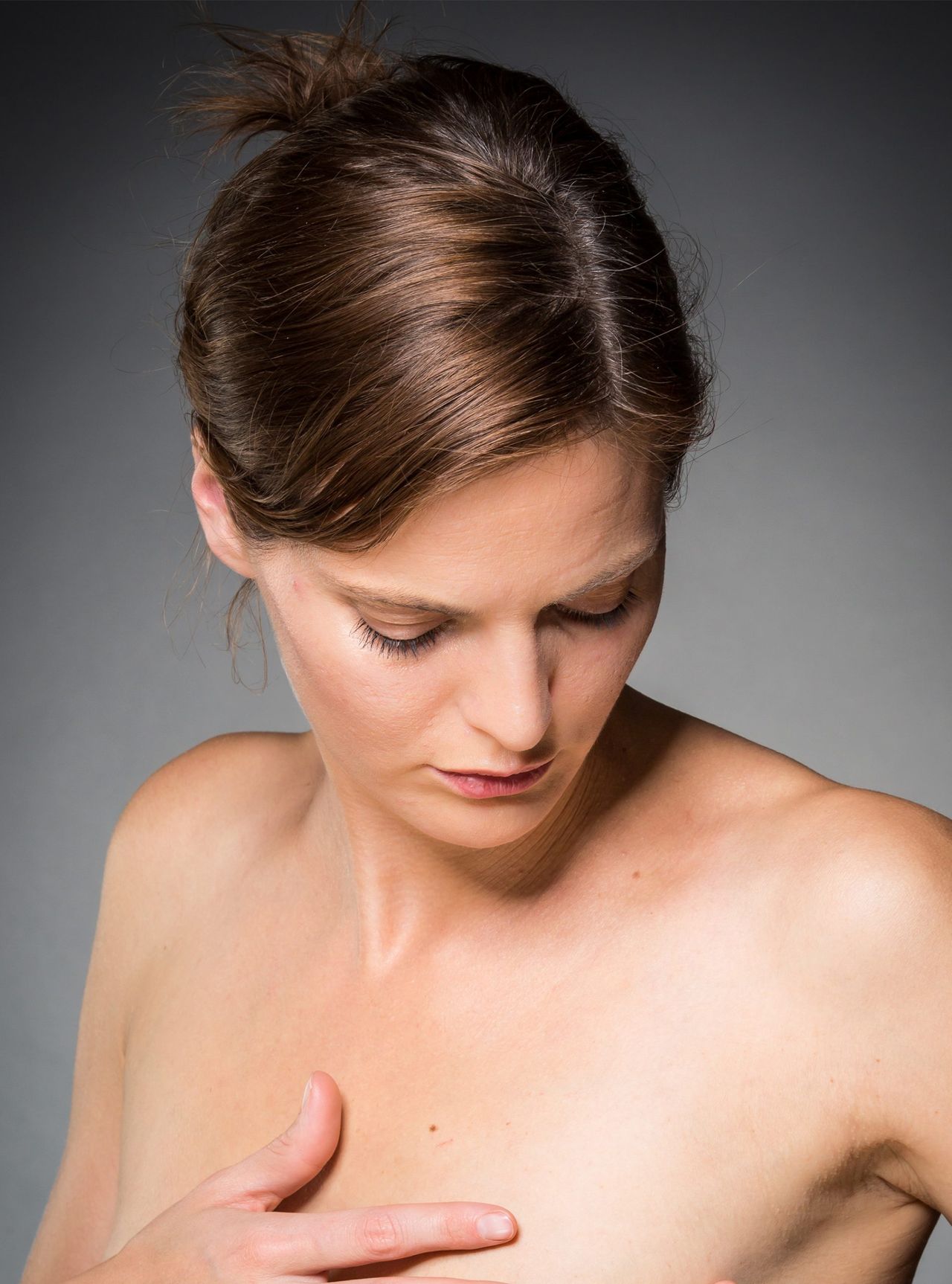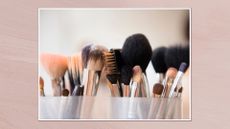6 Things Your Boobs Are Trying To Tell You

Sore boobs? Don't panic. Two thirds of us will experience breast pain at some point. Variously known as mastalgia, mammalgia and mastodynia, it is not linked with cancer in the vast majority of cases. Similarly, whilst symptoms like breast lumps, itchy boobs, a rash on the breast or nipple discharge may be alarming, they're rarely signs of something more sinister. However, if you experience any of the following warning signs, it's time to listen up. The solution might be as simple as buying a new bra or tweaking your diet, but if symptoms persist for more than a week or two, or you experience a combination of two or more symptoms, you should book an appointment with your GP to get to the root of the issue. Read on to find out what your breasts are trying to tell you...
If you have:
1. Dull, heavy or aching pain in both breasts...
It's probably hormonal. Breast tenderness is usually ‘cyclical' i.e. caused by the hormonal fluctuations associated with the menstrual cycle. Cyclical breast pain usually affects both breasts. It tends to begin 1-3 days before a period, improving as your period comes to an end. Tender boobs or aching breasts may also result from hormone replacement therapy (HRT). Wearing a well-fitting, supportive bra, taking paracetamol or ibuprofen and applying ibuprofen or diclofenac gel to the affected area can often help to soothe sore breasts. Taking magnesium, iodine or flaxseed supplements may also help, as can quitting smoking and limiting salt and caffeine. If the pain is unbearable, visit your GP, who can refer you to a specialist who can prescribe medication to control your hormone levels.
Breast pain may also be caused by ill-fitting bras, by hormonal contraceptives such as the pill, patch, injection or IUS, or by medications such as antidepressants and antipsychotics.
2. Pain in one breast...
Pain in the right boob a right pain in the boob? If your breast pain is confined to one breast, it's probably non-cyclical (i.e. caused by something other than hormones). Sufferers of non-cyclical breast pain usually complain of a tight, sore or burning pain in the breast, which may be constant or intermittent. This type of breast pain is more common after the menopause. A sharp pain in one breast could be the result of injury to a muscle, joint or bone in the neck, chest, back or shoulder area, since pain can be ‘referred' along the nerves in the chest area. This type of pain is generally confined to a localised area and may become more severe when you move around. Angina and acid reflux occasionally present as a burning pain in the left breast area.
Infections and tumours (both benign and cancerous) may also cause localised breast pain. However, in these cases, it's usually accompanied by other symptoms, e.g. lumps, rashes or discharge.
3. Breast lumps...
Most breast lumps are harmless. However, they should always be checked by a doctor.
Women who suffer from cyclical pain may have fibrocystic breast tissue, containing lumpy, fluid-filled cysts which tend to become more tender just before a period. Cysts often develop in women over 35. Other kinds of lumps include fibroadenomas (smooth, firm lumps which may move around the breast) and abscesses (pus-filled, painful swellings, usually caused by bacterial infections such as mastitis).
Sign up for the woman&home newsletter
Sign up to our free daily email for the latest royal and entertainment news, interesting opinion, expert advice on styling and beauty trends, and no-nonsense guides to the health and wellness questions you want answered.
A hard lump that doesn't move around is more likely to be a sign of breast cancer. A large lump near the nipple, or several smaller lumps further away, could signify intraductal papilloma, a type of non-cancerous tumour which forms in the milk ducts and is most common in women aged 35-55.
4. Itchy breasts...
Many cases of itchy breasts can be put down to eczema, contact dermatitis, sunburn or minor injuries. Certain medications may also play a role. Rashes often accompany breast itches. If you notice red, swollen areas which feel itchy, painful or hot to touch, you may have mastitis, which can be caused by a bacterial infection. Other symptoms include nipple discharge, lumps or areas of hardness and flu-like symptoms such as aches, chills and fever. If you think you may have mastitis, see your GP, who can prescribe antibiotics.
In rare cases, itching can be a symptom of breast cancer. However, it is usually accompanied by other symptoms. Paget's disease is a rare form of breast cancer which affects the skin on and around the nipple. Symptoms include itching, tingling or burning sensations, flaky, scaly or oozing skin, redness and nipple discharge.
5. Rash on breast...
Rashes on the breasts are usually the result of contact dermatitis or allergic reactions. However, they can also signify the presence of a fungal infection, mastitis or, in rare cases, a tumour. If a rash is accompanied by pain, oozing or fever, visit your GP immediately.
6. Nipple discharge...
Some degree of nipple discharge in response to physical stimulation is normal, even in women who aren't pregnant or breastfeeding. It may also be caused by certain medications. However, in some cases, nipple discharge may be a sign of mastitis or of a benign or cancerous tumour, particularly if only one breast is affected.
-
 Chocolate brown is everywhere but Ranvir Singh's Reiss sale dress stands out from the crowd
Chocolate brown is everywhere but Ranvir Singh's Reiss sale dress stands out from the crowdRanvir Singh has made us fall in love with deep cocoa brown all over again and her Reiss midi dress is more than 50% off
By Emma Shacklock Published
-
 As a beauty editor who's tried hundreds of makeup brushes, these are the only five you need
As a beauty editor who's tried hundreds of makeup brushes, these are the only five you needDon’t waste money on unnecessary tools; from my decade of experience, these are the ones to own
By Victoria Jowett Published